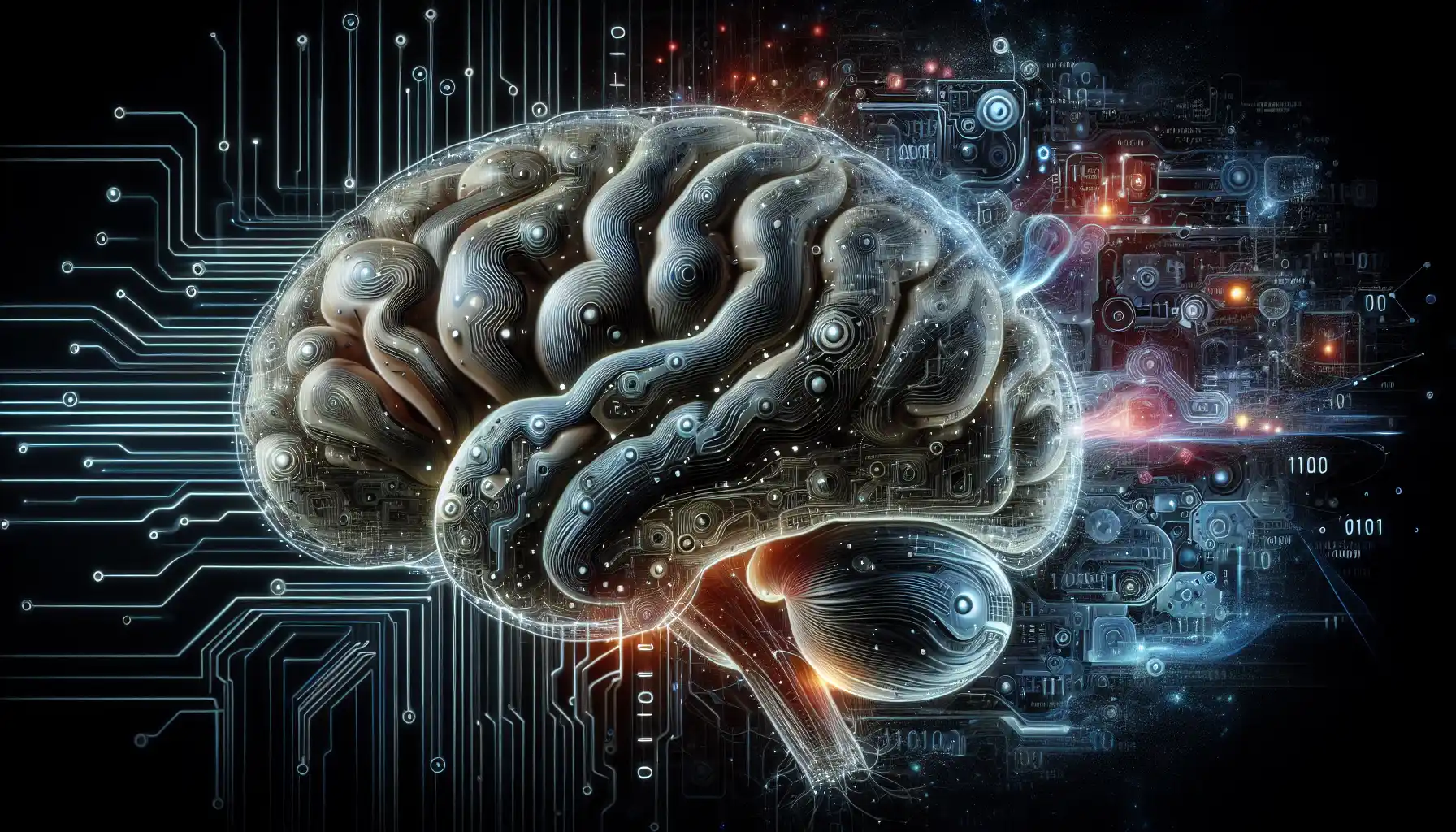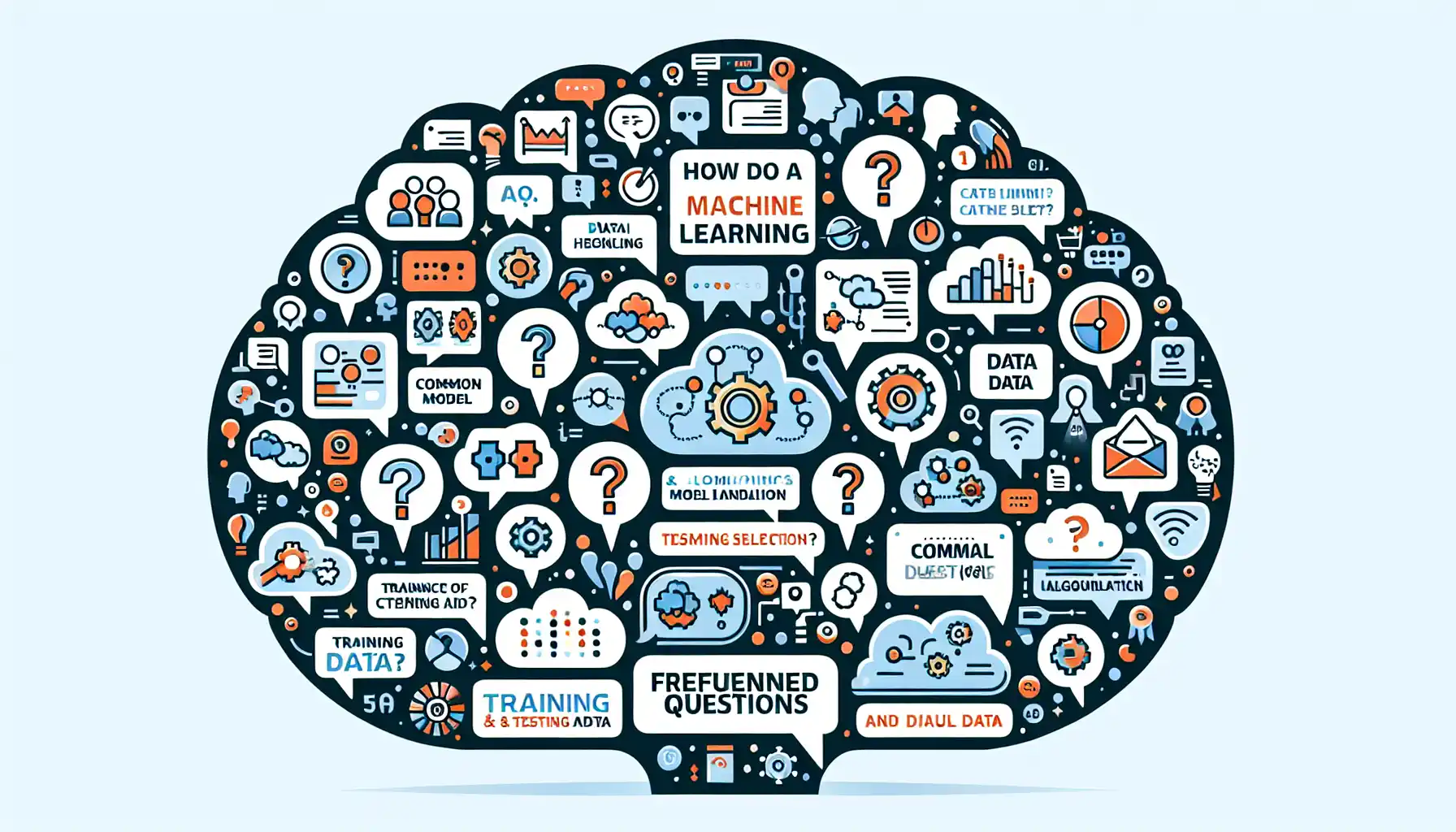In a world flooded with data, having the ability to harness its potential has become crucial. Machine Learning (ML) is the key to unlocking that potential.
It allows you to build models that can make predictions, find patterns, and reveal insights from your data. It has applications in almost every industry, from finance and healthcare to marketing and cybersecurity.
This article is an exploration of how to build machine learning models. We will cover the fundamentals of data preparation, model selection, and model evaluation. You will learn to use popular tools like Python and scikit-learn to create powerful models.
So let’s dive in and take your first steps towards becoming a machine learning master.
What is a Machine Learning Model?

At the core of machine learning is the concept of a model. A machine learning model is a mathematical representation of a real-world process.
For example, you could create a model that predicts the price of a house based on its size, location, and other factors.
In machine learning, we use data to train our models. This means we show the model a bunch of examples (data) and let it figure out the patterns and relationships within the data. Once the model is trained, it can then be used to make predictions or decisions on new, unseen data.
Key Steps in Building a Machine Learning Model

The process of building a machine learning model can be broken down into five key steps:
- Problem Definition: Clearly defining the problem you want the model to solve.
- Data Preparation: Preparing your data for training and testing the model.
- Model Selection: Choosing the appropriate model for your problem.
- Model Training: Using your prepared data to train the model to make predictions.
- Model Evaluation: Testing your model on new data to see how well it performs.
In the following sections, we will go over the fundamentals of each step. We will provide code examples in Python to help you understand the concepts better.
1. Problem Definition

Before you start building a machine learning model, it’s essential to clearly define the problem you want to solve. Articulate what you want the model to accomplish in clear terms.
Let’s look at an example.
Example: Predicting House Prices
Problem: Given a set of features such as the number of rooms, the size of the property, and the location, we want to predict the selling price of a house.
Question: What is the predicted selling price of a house with 3 bedrooms, 2 bathrooms, 2,000 square feet of living space, and is located in the city of Boston?
Remember to choose a problem that is both feasible and valuable. It should be one where machine learning can add real value.
2. Data Preparation

After defining the problem, the next step is to prepare your data for model building. Data preparation is one of the most critical and time-consuming aspects of machine learning.
Your data preparation will typically involve the following tasks:
- Data Collection: Gathering all the relevant data that you will use to build and test your model. This can include both structured and unstructured data.
- Data Cleaning: Removing or correcting any errors or inconsistencies in the data. This can include dealing with missing values, outliers, and duplicates.
- Feature Engineering: Creating new features from the existing data that may help improve the performance of your model. This can include things like scaling, normalization, and creating interaction terms.
- Data Splitting: Splitting your data into a training set and a testing set. The training set is used to train your model, while the testing set is used to evaluate its performance.
- Data Preprocessing: Preprocessing your data in a way that makes it suitable for the model. This can include things like encoding categorical variables, handling missing values, and scaling features.
In the next section, we will look at the last two steps, model selection and model training.
3. Model Selection

Once you have defined your problem and prepared your data, the next step is to choose a model. Model selection is an important step in the machine learning process.
You need to choose the model that is best suited to your specific problem and data.
There are two main types of machine learning models:
- Supervised learning models: These are models that learn from labeled data, where the input and output are both known. Common supervised learning algorithms include linear regression, decision trees, and support vector machines.
- Unsupervised learning models: These are models that learn from unlabeled data, where only the input is known. Common unsupervised learning algorithms include clustering algorithms and dimensionality reduction techniques.
Choosing the Right Model
When choosing a model, you should consider the following:
- Type of problem: What type of problem are you trying to solve? Is it a classification problem, where the goal is to assign a label to a data point, or a regression problem, where the goal is to predict a continuous value?
- Size of the dataset: How much data do you have? Some models work better with small datasets, while others require a large amount of data to perform well.
- Complexity of the data: How complex is the relationship between the input and output variables? Some models are better at capturing complex relationships, while others are better suited for simpler data.
In the next section, we will look at the model training step in machine learning.
4. Model Training

Once you have chosen the appropriate model, the next step is to train the model on your data.
Model training is the process of adjusting the model’s parameters to minimize the difference between the model’s predictions and the actual target values in the training data.
The process of training a machine learning model typically involves the following steps:
- Initialize the model: Start by initializing the model with some initial parameters.
- Make predictions: Use the current parameters of the model to make predictions on the training data.
- Compute the loss: Compare the model’s predictions with the actual target values in the training data to compute the loss.
- Update the parameters: Use an optimization algorithm (e.g., gradient descent) to update the model’s parameters in a way that reduces the loss.
- Repeat steps 2-4: Continue making predictions, computing the loss, and updating the parameters until the loss is minimized.
In the next section, we will look at the final step of building a machine learning model, model evaluation.
5. Model Evaluation

Once your model is trained, the final step is to evaluate its performance. Model evaluation is crucial for determining how well your model will perform in the real world.
There are several different ways to evaluate the performance of a machine learning model, depending on the type of problem you are trying to solve:
- Regression problems: For regression problems, you can use metrics such as mean squared error (MSE) or R-squared to evaluate the performance of your model.
- Classification problems: For classification problems, you can use metrics such as accuracy, precision, recall, or F1 score to evaluate the performance of your model.
Testing the Model
To evaluate the performance of your model, you can use a test dataset. This is a separate dataset that was not used during the training of the model. You can make predictions on the test dataset and compare them with the actual target values to evaluate the model’s performance.
Cross-validation is a technique used to evaluate the performance of your model while also maximizing the use of your data. It involves splitting the data into multiple subsets, training the model on some of the subsets, and then evaluating it on the remaining subset.
Key aspects of model evaluation:
- Bias-Variance Tradeoff: Finding the right balance between bias and variance is crucial. A model with high bias will underfit the data, while a model with high variance will overfit the data.
- Hyperparameter Tuning: Adjusting the hyperparameters of your model can improve its performance. It involves fine-tuning the model’s parameters to get the best possible performance.
- Overfitting and Underfitting: Overfitting occurs when the model performs well on the training data but poorly on the test data. Underfitting occurs when the model performs poorly on both the training and test data. Both overfitting and underfitting are common problems in machine learning.
- Feature Importance: Understanding the importance of features in your model can help you improve its performance. Feature importance tells you which features have the most impact on the model’s predictions.
In the next section, we will look at popular machine learning tools you can use to build machine learning models.
6. Popular Tools for Building Machine Learning Models

There are several popular tools and libraries that can help you build machine learning models. Some of these tools are:
- Scikit-Learn: Scikit-Learn is one of the most popular machine learning libraries for Python. It provides simple and efficient tools for data mining and data analysis. Scikit-Learn has a wide range of algorithms, including support vector machines, random forests, and k-means.
- TensorFlow: TensorFlow is an open-source library for numerical computation and large-scale machine learning. It is developed by the Google Brain team and is widely used for building deep learning models. TensorFlow provides a rich ecosystem of tools and community support.
- Keras: Keras is a high-level neural networks API, written in Python and capable of running on top of TensorFlow, Theano, or CNTK. It allows for easy and fast experimentation with neural networks. Keras is popular for its user-friendly interface and modularity.
- PyTorch: PyTorch is an open-source machine learning library developed by Facebook’s AI Research lab. It is known for its flexibility and ease of use. PyTorch is popular for building deep learning models and has gained significant traction in the research community.
Final Thoughts

The journey from data to decisions is an exciting one, and machine learning is your trusty guide.
It has the potential to transform the way we make sense of the world. So, if you’re ready to harness the power of data and make some intelligent decisions, then you’re in the right place.
Start building your machine learning models and let the data do the talking.
Frequently Asked Questions

How do you build a machine learning model?
To build a machine learning model, follow these steps:
- Collect and clean data: Gather relevant data and clean it to remove any errors or inconsistencies.
- Choose a model: Select the most appropriate model for your data and problem.
- Train the model: Use your data to train the model to make predictions or decisions.
- Evaluate the model: Test your model on new data to see how well it performs.
- Tune the model: Adjust the model’s parameters to improve its performance if necessary.
What are the steps in building a machine learning model?
The key steps in building a machine learning model are:
- Problem definition: Clearly define the problem you want the model to solve.
- Data preparation: Collect, clean, and preprocess the data for training and testing.
- Model selection: Choose the appropriate model for your problem.
- Model training: Use your prepared data to train the model to make predictions.
- Model evaluation: Test your model on new data to see how well it performs.
What is the process of building a model?
The process of building a machine learning model involves defining the problem, collecting and preparing the data, choosing a model, training the model, and evaluating its performance.
After the evaluation, you may need to fine-tune the model or go back to a previous step to improve its performance.
How to create a machine learning model from scratch?
To create a machine learning model from scratch, you’ll need to follow the steps in building a machine learning model.
This involves collecting and cleaning data, choosing a model, training the model, and evaluating its performance.
You can use various tools and libraries like scikit-learn, TensorFlow, or PyTorch to help you with the implementation.
What are the basic steps to create a machine learning model?
The basic steps to create a machine learning model are:
- Define the problem you want to solve.
- Collect and clean the data.
- Choose a model that’s suitable for your problem.
- Train the model on your data.
- Evaluate the model’s performance.
- Make any necessary adjustments to the model or the data.
- Use the model to make predictions or decisions.







